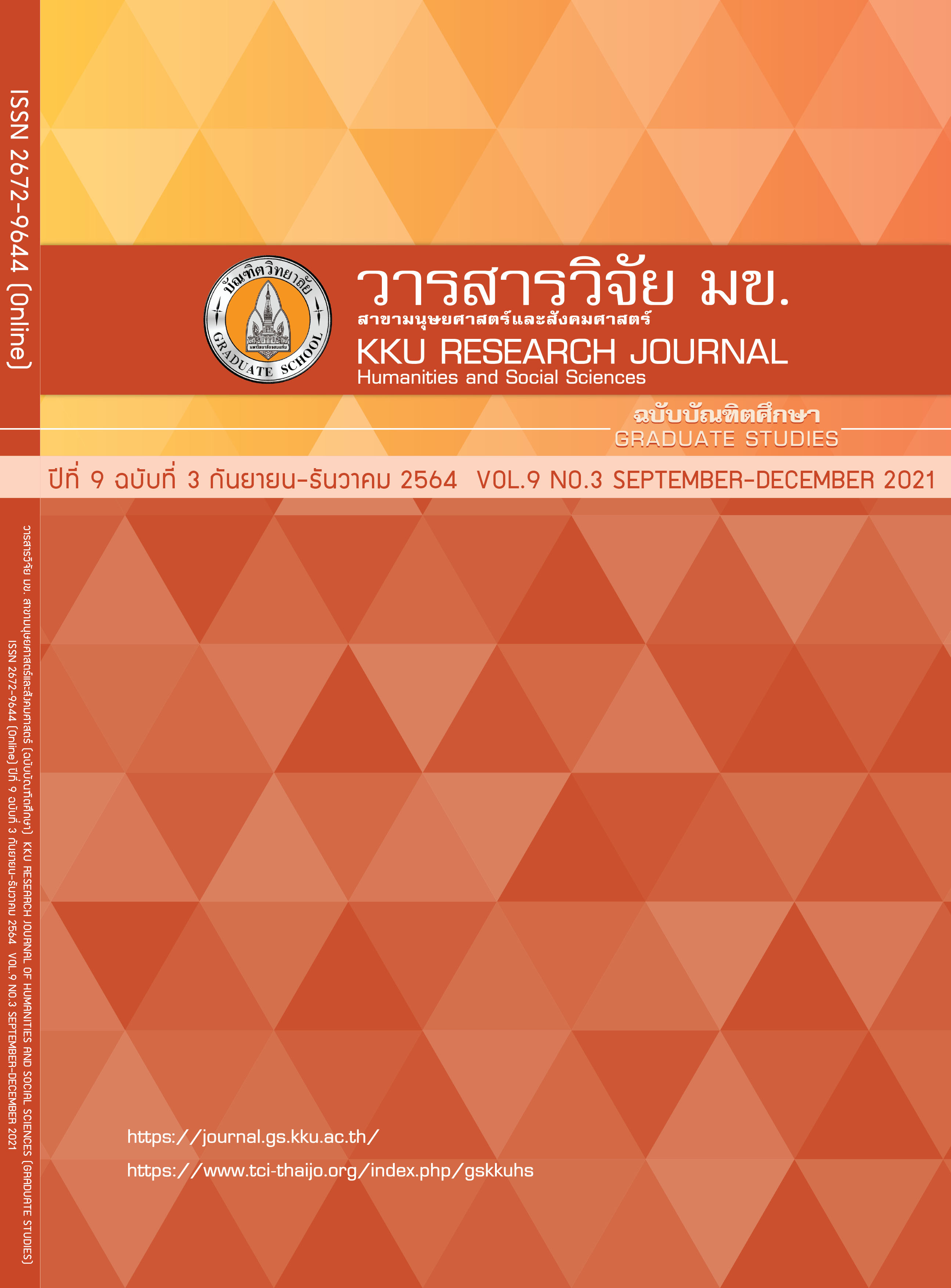Suicidal thoughts and Attempting of Secondary School Students in Thailand
Keywords:
Suicidal thoughts and attempting, Youth, FamilyAbstract
The objective of this article was to study the suicidal thoughts and attempting and the factors associated with suicidal thoughts and attempts in secondary school students. A quantitative research methodology was used to analyze the Thailand 2015 Global School-Based Student Health Survey (GSHS) data which conducted by The World Health Organization (WHO) and the United States Centers for Diseases Control and Prevention (CDC), in collaboration with the Department of Health, the Department of Health. The binary logistic regression was employed in this study. The results showed that the students who rarely or sometime and mostly of the time or always felt lonely were more likely to have (Odds ratio: OR) suicidal thoughts and attempts higher than the students who never felt lonely by 4.0 times (95% CI 3.0 – 5.5) and 1.8 times (95% CI 1.3 – 2.4) respectively. Students who were mostly or always so worried about something that they could not sleep at night were more likely to have suicidal thoughts and attempts than the counterparts by 2.8 times (95% CI 2.0 – 3.9). For family factors, students who reported that their parents never or rarely and sometimes really knew what they were doing with free time were more likely to have suicidal thoughts and attempts than those who reported that parents most of the time or always really knew by 1.8 times (95% CI 1.3 – 2.5) and 1.5 times (95% CI 1.2 – 1.8) respectively. Besides, students who reported that their parents most of the time or always and sometimes went through their things without their approval were 1.9 times (95% CI 1.3 – 2.7) and 1.4 times (95% CI 1.1 – 1.8), respectively, more likely to have suicidal thoughts and attempts than those whose parents never went through. Thus, it could be concluded that loneliness and worry are risk factors while good family relationships are protective factors against suicidal thoughts and attempts at high school students in Thailand.
References
WHO. World report on violence and health: Summary. Luxembourg: WHO; 2002.
Powwattana A, Auemaneekul N, Lagampan S. Risk behaviors prevention in adolescence: concepts and management in multilevel approach. Bangkok: Danex Intercoperation; 2018. Thai.
Emile D. Suicide: A Study in Sociology. Simpson G, editor. 2nd ed. [n.p.]: Taylor & Francis e-Library; 2005.
WHO. World population review: Suicide rate by country 2019 [Internet]. 2018. [updated 2018; cited 2021 Apr 02]. Available from: http://worldpopulationreview.com/countries/suicide-rate-by-country/
Office of The National Economic and social Development Council. The Thailand’s Social Outlook of Q1/2019. Social Situation and Outlook. 2019; 17(2): 23-25. Thai.
Prateepteranun W. The rate of suicide and factors related to suicidal behavior at Chaoprayayomrat Hostpital Suphanburi Province.The Journal of Psychiatric Nursing and Mental Health. 2557; 28(3): 90-103. Thai.
Peltzer K, Pengpid S. Suicidal ideation and associated factors among school-going adolescents in Thailand. Int J Environ Res Public Health. 2012; 9: 462-73.
Mahfoud ZR, Afifi RA, Haddad PH, Dejong J. Prevalence and determinants of suicide ideation among Lebanese adolescents: Results of the GSHS Lebanon 2005. J Adolesc. 2011 Apr; 34(2): 379-84. doi: 10.1016/j.adolescence.2010.03.009.
Chen PC, Lee LK, Wong KC, Kaur J. Factors relating to adolescent suicidal behavior: A cross-sectional Malaysian school survey. J Adolesc Health. 2005 Oct; 37(4): 337. doi: 10.1016/j.jadohealth.2004.10.018.
Cheng Y, Tao M, Riley L, Kann L, Ye L, Tian X, Tian B, Hu J, Chen D. Protective factors relating to decreased risks of adolescent suicidal behavior. Child Care Health Dev. 2009 May; 35(3): 313-22.
Page RM, Yanagishita J, Suwanteerangkul J, Zarco EP, Mei-Lee C, Miao NF. Hopelessness and loneliness among suicide attempters in school-based samples of Taiwanese, Philippine, and Thai adolescents. School Psychology International. 2006; 27(5): 583-98. doi: 10.1177/0143034306073415.
Wang J, Deng XJ, Wang JJ, Wang XW, Xu L. The associations between health risk behaviors and suicidal ideations and attempts in an urban Chinese sample of adolescents. J Affect Disord. 2010 Oct: 126; (1-2): 180-7. doi: 10.1016/j.jad.2010.02.121. Epub 2010 Mar 11.
White J. Preventing youth suicide: A guide for practitioners. British Columbia: Ministry of Children and Family Department; 2015.
Barber, B. K.Adolescent socialization in context – the role of connection, regulation, and autonomy in the family. Journal of Adolescent Research. 1997; 12: 5-11.
Bureau of Health Promotion, Department of Health. Thailand 2015 Global School – Based Student Health Survey: GSHS. Bangkok: The War Veterans Organization of Thailand; 2562. Thai.
Rungsang B, Chaimongkol N, Deoisres W, Wongnam P. Suicidal ideation among Thai adolescents: An empirical test of a causal model. Pacific Rim Int J Nurs Res. 2017 April-June; 21(2): 97-107.
WHO. Preventing suicide a global imperative. Geneva, Switzerland: WHO library Cataloguing-in-publication data; 2014.
Liu RT, Miller I. Life events and suicidal ideation and behavior: A systematic review. Clin Psychol Rev. 2014 Apr; 34(3): 181-92. doi: 10.1016/j.cpr.2014.01.006. Epub 2014 Feb 4.
Polpipatpong S, Chaimongkol N, Vatanasin D. Suicidal Ideation in Adolescent and Its Associated Factors. The Journal of Faculty of Nursing Burapha University. 2561; 26 (1): 40-9. Thai.




